What is MMA (Manual Metal Arc) Welding? – How Does it Work?
Last Updated on
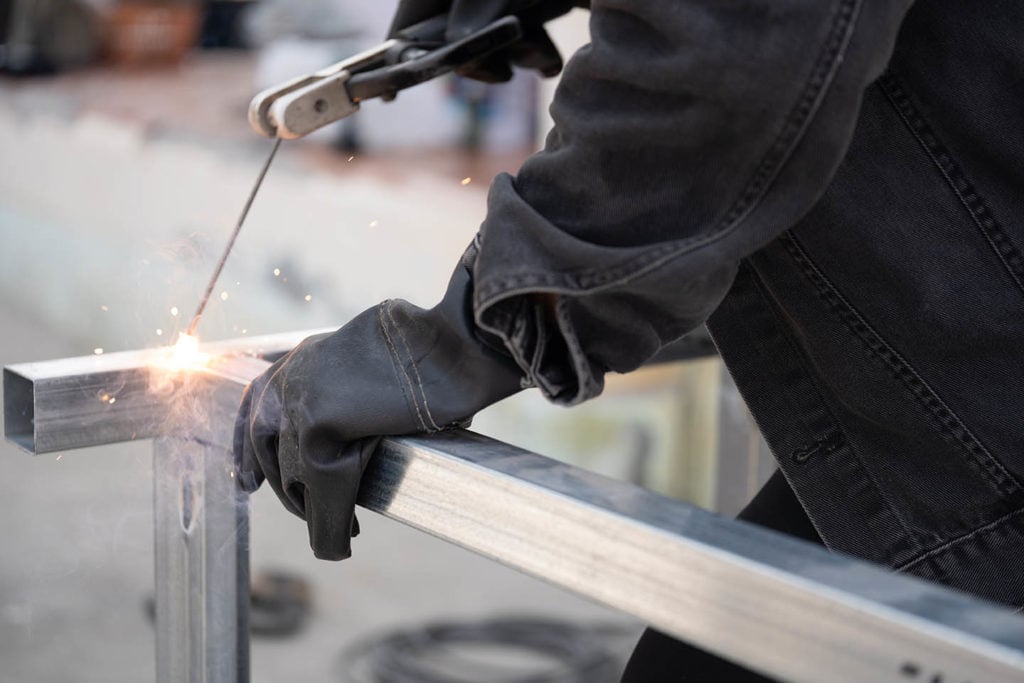
One of the most widely used and versatile arc welding approaches, Manual Metal Arc (MMA) welding, involves creating an arc between a metal-coated anode and a workpiece.
Therefore, what is MMA welding? It’s also called Shielded Metal Arc welding (SMAW). It’s a procedure in which the electric arc burns between the coated anode and the workpiece.
In this article, we shall debate everything you need to know about Manual Metal Arc welding. We will also concisely take a look at other questions that are associated with MMA welding. Let’s jump right in!
How Does MMA Welding Work?
It may be a crucial query to answer about MMA welding. With MMA welding, you should put the anode in an electrode holder, and it briefly touches the point to be connected. A short circuit is produced, and the arc starts once the anode is lifted.
The anode with the coating changes to a liquid, and then slag is created over the welded surface. The heat from the arc thaws the anode and the base metal, which combines to form a coherent solid mass as it cools.
The metal anode or the core cable acts as a consumable. It’s the perfect attachment method for numerous mediocre and high resistance carbon steel.
An electric current produced by the welding power supply is used to generate an arc between the anode and the metal that you’re welding. The arc changes the anode’s core into a liquid to produce drops of melted metal. The procedure creates the weld.
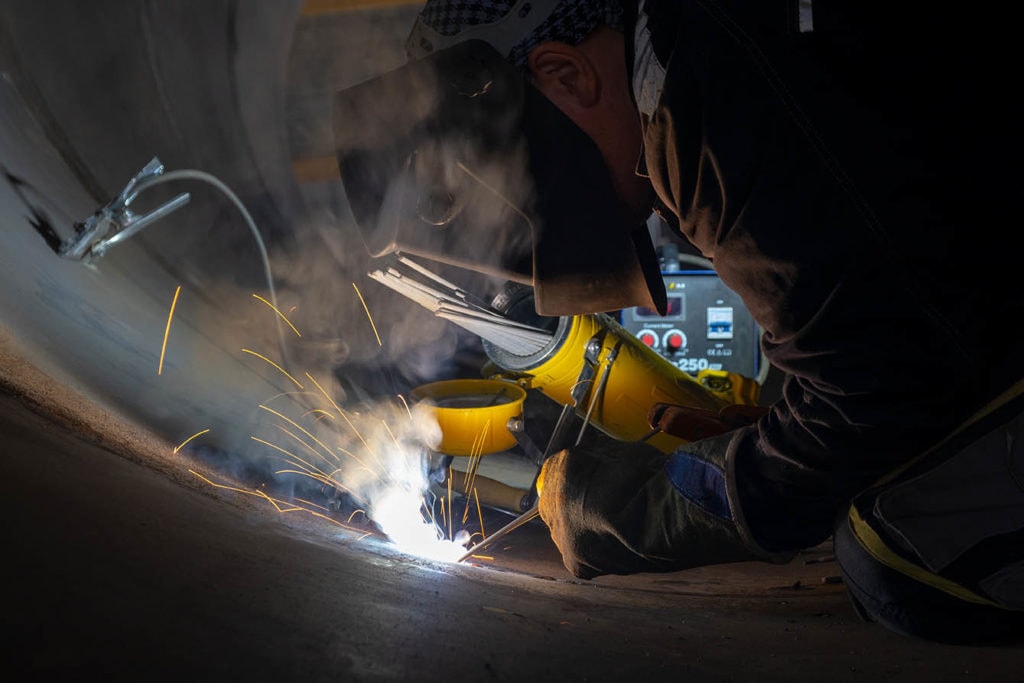
The flux coating on the electrode also thaws and forms a protective gas. It creates a layer of slag that protects the weld from atmosphere deterioration. Get rid of the slag layer after every weld.
There are seven distinct factors and parameters that determine the success of MMA welding. They comprise the following:
- The correct electrode
- A suitable travel velocity
- The correct size of anode for the task
- A suitable electrode angle to work
- The ideal welding current
- The appropriate arc length
As soon as the arc is created between the anode and the workpiece, the material is bonded to constitute a weld pool.
Besides, the anode has an outer covering known as the electrode flux. It thaws and offers an impediment over the weld pool to stop the contamination of the melted pool.
It cools and forms a solid slag on top of the weld. After you’ve completed or before introducing another weld bead, you have to strip the slag away from the weld bead. Due to the length of the anode, the process can only form shorter weld seam lengths before you insert a new electrode into the holder.
The Importance of AC/DC
The quality of the weld deposit relies on the welder’s expertise. The source of power gives a constant current (CC) output. It can either be AC (Alternating Current) or DC (Direct Current).
During small maintenance activities or in DIY, you’ll use the tiny, somewhat inexpensive current (AC) sets. The DC output is the most commonly used set today, although you can use a couple of larger AC sets in heavy industries.
It’s crucial to note that not all direct current anodes can work with AC power output. Nonetheless, AC anodes can operate on both alternating and direct current. DC is the most commonly used mode. The power supply of the AC may seem to be swapping transformers or iron core.
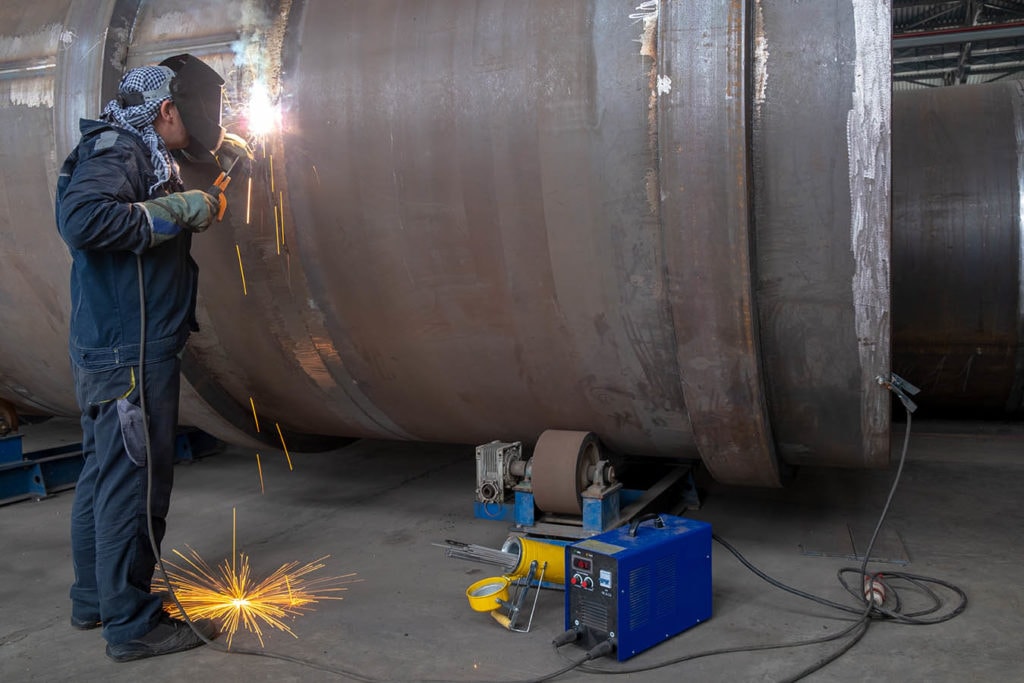
What’s the Working Principle of MMA Welding?
MMA welding, conventionally known as Manual Metal Arc Welding is a dependable and candid technique to adopt. It doesn’t require a high level of experience. In this procedure, filler, parent metal, and covered flux get heated by an electric arc.
When they melt, it creates a powerful weld joint. Here, you’ll find that it’s constituted by solidifying the noble gases.
Electric arc applications make the temperature of the coated and solidified gas material rise and form a protective noble gas over the workplace. This coated material implies that no additional gas cylinder is required to hinder an extra atmospheric reaction on the workpiece.
As a welder, make sure that you have a high-quality weld joint by adopting some of these measures:
The Exactness of the Welding Current Needed
Depending on the type of welding objects, you need the right current to create a stable electric arc that can thaw the parent material well. If you don’t have the arc, the quality of the weld will be decreased.
Selection of the Pertinent Rod
You have to choose a rod that has physical and chemical properties similar to the parent metal. The availability of electrical energy also influences your choice of the welding rod. Some sticks require more heat to melt the arc.
The welding rod size is also critical when it comes to selecting a welding rod. The length of the stick should be as per the workplace to save time when changing rods.
The Welding Angle
The welding angle’s position is also taken into account if you want a proper weld. If you’re a welder, you should have adequate experience to retain the welding gun’s edge. Put your welding gun at the right place where the weld is required.
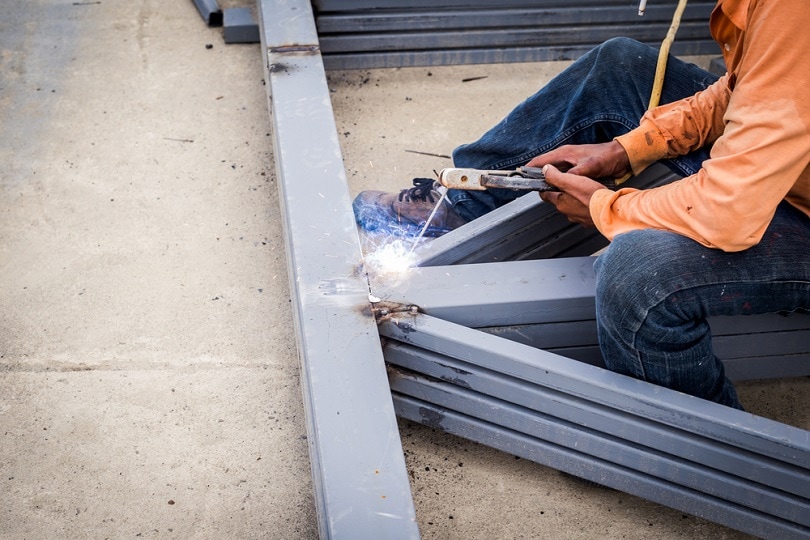
Where MMA Welding Used?
You can use MMA welding to attach most cast irons, steels, stainless steel, and numerous non-ferric materials. Other metals that you can attach using MMA welding are nickel, aluminum, and copper alloys. For numerous high-strength and mild carbon steels, MMA welding is the preferred method.
MMA welding is used every day by tradesmen, DIYers, security metal workers, and metal manufacturers, and pipe-laying workplaces. It includes forming a high-intensity electric arc between the metals being attached and the protected metal-core anode.
Besides, dissimilar to MIG or TIG welding, MMA welding isn’t influenced by the weather. It makes it the most effective outdoor welding procedure.
What is MMA Inverter Welding?
Contemporary inverter welders can assist in solving various issues related to MMA welding. They have great properties and effectiveness because you can handle every operation electronically.
Nonetheless, your preferred welding inverter power source should have sufficient strength to thaw the weld material and the anode with adequate capacity to maintain the arc’s voltage.
The MMA welding procedure usually requires high power output of between 50 and 350 Amps. It’s always advisable to read the maker’s directions before using inverter welding although the anodes used for the device are meant to operate on several voltage levels and output power.
MMA inverter welders are cost-saving. They have other benefits such as:
- They can offer greater outputs for smaller devices.
- Inverter welders are more compact and lightweight.
- They can offer an energy-effective power supply.
Advantages of MMA Welding
- The welding gear is portable and the cost is somewhat low.
- The MMA welding procedure has countless uses due to the availability of a large number of anodes.
- You can use it to weld a wide variety of metals and their alloys.
- You can carry out MMA welding in any position with the highest weld quality.
- You can also use the MMA welding procedure for hard facing and metal deposition to repossess parts or to develop other properties such as wear resistance.
- Connections (for instance, between nozzles and shell in a pressure container) cannot be welded using automatic welding machines due to their position. However, you can achieve this easily if you use Manual Metal Arc Welding.
Disadvantages of MMA Welding
- The restricted length of every anode and brittle flux covering make it hard to automate the procedure.
- When welding long connections, for instance, pressure vessels, welding must be continued with the next anode after one electrode has finished. Unless you take care of it, a fault, such as a slag inclusion or inadequate penetration, may take place at the point where welding is started again using the new electrode.
- The procedure utilizes stick anodes and, therefore, it’s much slower than MIG welding.
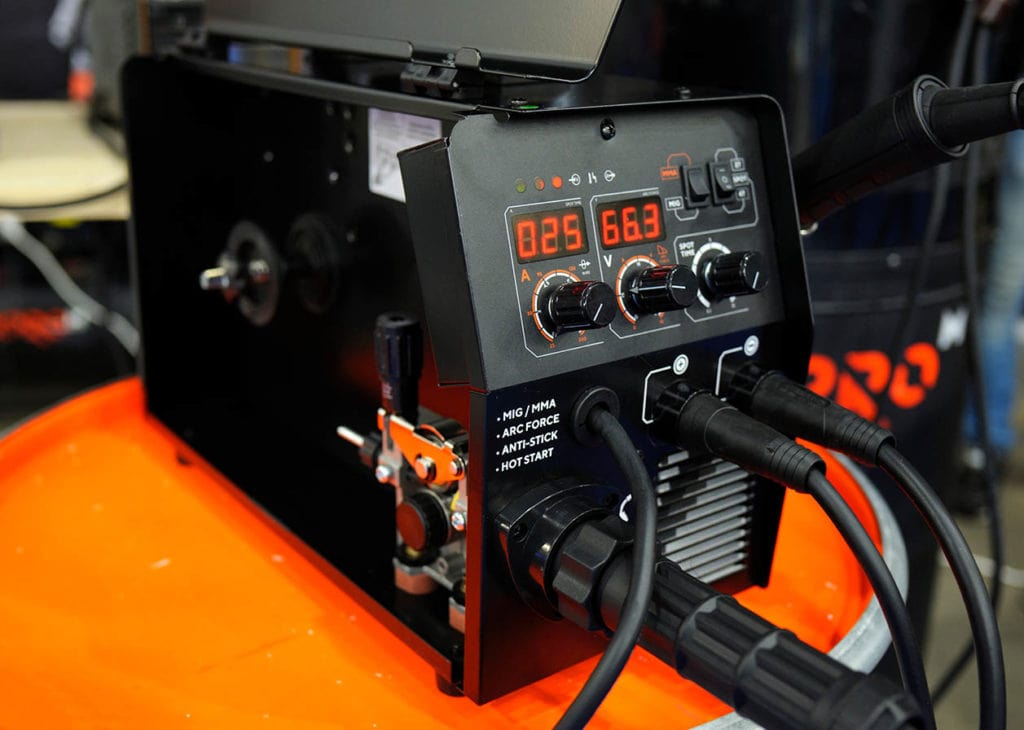
Benefits and Drawbacks of DC and AC Welding Sets
Advantages of AC Welding Sets
- They’re more affordable than DC sets. The incipient price is higher than that of a DC set with a similar rating.
- It requires little or no maintenance. It’s because the AC welding set has no moving parts.
- It has no such thing as an “arc” like the DC welding set.
Drawbacks of AC Welding Sets
- Non-ferric anodes aren’t deposited well.
- The risk of electric shock is more pronounced with Alternating Current than with the Direct Current.
Advantages of DC Welding Sets
- You can use DC set to deposit both ferric and non-ferric anodes.
- It creates smoother welding and, therefore, you have an added advantage when welding the thin sheet metal.
- It’s safer to utilize in wet conditions where there’s a greater danger of electric shock, for instance, boiler work.
- In remote places where there’s no mains power supply, you can use diesel or petrol, for example, construction sites.
Drawbacks of DC Welding Sets
- It’s more costly than AC welding sets.
- Since it has moving parts, periodic maintenance of the welding set is a requisite.
- The “Arc Blow” has issues.
- See also: How to Build Welding Lead Reels
What is an Arc Blow as used with the DC Welding set?
An “Arc Blow” occurs with direct current welding gear. The arc is pushed away from the welding point, especially if you’re welding in nooks. The conductors that carry the current, specifically the return lead from the workpiece, and the welding lead from the set transport current in the opposite direction.
In this way, a magnetic force that repels is set up, and this affects the DC welding arc. These conditions mostly take place if you’re using currents above 200 or less than 40 amps. The best type of connection should:
- Weld away from the ground connection
- Alter the earth wire position while working
- Enfold the welding wire a couple of rotations around the work, on beams if possible
- If you’re working on a bench, alter the work position on the table
FAQs
What are the four types of welding?
The four main welding types comprise:
- MIG (Gas Metal Arc Welding).
- MMA (Shielded Metal Arc Welding).
- TIG (Gas Tungsten Arc Gas Welding).
- Flux Colored Arc Welding.
What is the MMA welding procedure?
MMA (Manual Metal Arc) welding is the supplest and one of the most commonly used arc welding procedures. An arc is struck between a coated metal anode and a workpiece. The arc’s heat thaws the base metal and the anode which blend to create an incessant solid mass as they cool.
What would happen if you gaze at a welder?
Flash burns take place if you’re predisposed to luminous UV (Ultraviolet) light. They’re caused by all UV light types. However, the most common source is welding torches. For this reason, it’s sometimes referred to as “welder’s flash” or “arc eye.” Flash burns are similar to sunburns in the eye and can affect both eyes.
Between welding up and down, which is the best?
If your materials are thicker than sheet metal, then carry out vertical welding uphill. When welding thinner sheet metal, perform it downhill as less penetration is needed, and the quicker travel speed generates cooler temperatures that prevent burnout.
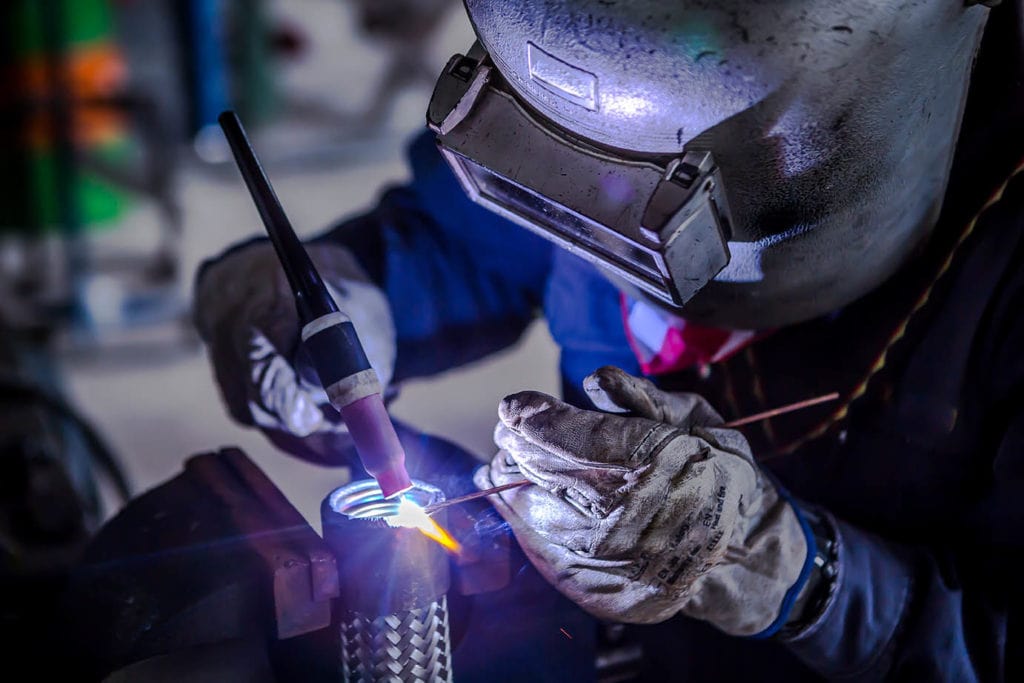
A Quick Reference Guide
- Working with thin and delicate metals
- If you don’t have a shielding gas
- If you’re a seasoned welder
- If you light welding tasks
- Welding a heavy-duty metal plate
- When you have a shielding gas
- If you’re a beginner welder
- When you have heavy welding tasks
Final Thoughts
MMA welding comprises everything we’ve detailed above about the procedure. With the information given in this article, you can decide if MMA welding is a procedure you would prefer to use over the other welding types for your particular application.
Featured Image Credit: Jirasin Snap, Shutterstock
